Results 1 to 10 of 10
 16Likes
16Likes
Thread: A John Barber mystery...
-
02-22-2022, 08:37 AM #1Junior Member

- Join Date
- Feb 2022
- Location
- Sweden
- Posts
- 5
Thanked: 0 A John Barber mystery...
A John Barber mystery...
Hi all!
I'd be very happy for help with a bit of a mystery I've run into...
This is an 1800's John Barber which I'm trying (failing!? ) to date more specifically. It comes in a case from D&G Holy & Co dated 1830-1837 which of course may be a later "addition". It has the characteristic set square and compass with "JOHN BARBER" stamped above, a mark granted to the maker in 1823. This would, on the one hand, imply the razor was made sometime in between 1823 and the 1840s at the latest, as it seems John Srs son-in-law, who after his death in 1834 resumed production and use of the JB marks, only resumed production of the Old English-type razors in 1847, which had both different looks as well as marks.
) to date more specifically. It comes in a case from D&G Holy & Co dated 1830-1837 which of course may be a later "addition". It has the characteristic set square and compass with "JOHN BARBER" stamped above, a mark granted to the maker in 1823. This would, on the one hand, imply the razor was made sometime in between 1823 and the 1840s at the latest, as it seems John Srs son-in-law, who after his death in 1834 resumed production and use of the JB marks, only resumed production of the Old English-type razors in 1847, which had both different looks as well as marks.
On the other hand, the tail is a "long" stub tail or monkeytail mashup, which points more towards the mid-19th century as far as I've gathered. Other than that, it has a very faint, barely legible etching on the blade saying "Silver Steel" in Italic, which from what I've understood also became common mid-century. It also has a bit of a frameback design which is yet another aspect that points more toward the mid-1800s. To add to the confusion however, John Barber was registered as "& Son" in 1833, but to what extent that name ever transferred to the marks on the razors seems unsure.
The only examples of marks reading "JOHN BARBER & SON" I've seen is late 1800s, and most likely a product of Barber's grandson's revival of the marks from 1864-ca 1875. These examples don't resemble the razor at hand at all, IMO, see for example (https://aarauctions.com/servlet/Sear...&itemId=57488#), see also the marks in this thread: (https://sharprazorpalace.com/razors/...real-fake.html)
So, what's the story!? Anybody capable of cracking this??
A great source on Barber: https://www.hawleysheffieldknives.co...J0heI6hh5Hnj6Q
Enclosing a snippet of info from the legendary Neil Miller:
"John Barber was apprenticed in 1802 and gained the Freedom of the Guild of Cutlers in 1823. Being granted Freedom practically means he had served his apprenticeship and practised as a journeyman cutler for a period, before establishing his own mark (the compass and square). However, his company was making cutlery and flatware in the 1820s and strops and razors by the time he acquired his freedom, so there must be some sort of reason why there is such a large gap between apprenticeship and freedom being granted. In 1823 the company was at 29 South Street, Sheffield, before moving to Norfolk Street in 1828. After his death in 1834 the company continued as John Barber & Son. In 1839 they were also advertising themselves as successors to George Shepherd and were using the well-known Shepherd 'Wolf' mark - which was used by a variety of makers and has already confused many on this forum as to the true identity of the razor maker. Marks were 'fluid' things and often changed hands, it seems.
The company died in stages. The 'Old English' line of razors was sold off to Stephen Martin in 1847. In 1864 another John Barber - the grandson of the original John Barber - set up in the razor and cutlery business at the Portland Works in West Street, and used the old marks. The company did not survive after 1871 and never re-emerged again. But their marks did - they were used by Hall & Colley and Joseph Elliot.
Regards,
Neil
Last edited by Neil Miller; 02-13-2012 at 11:33 AM."
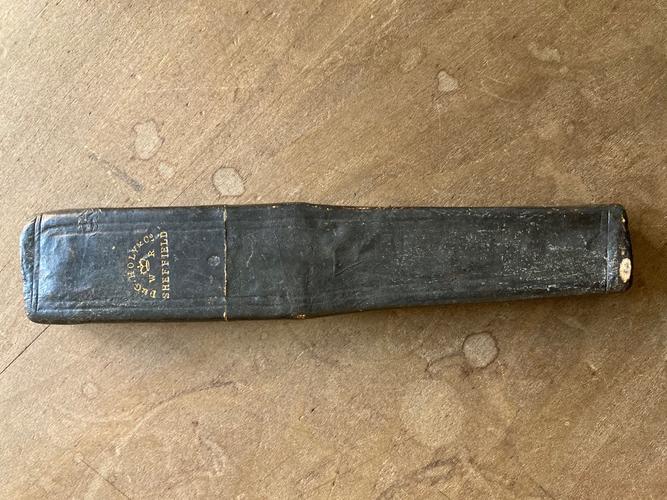
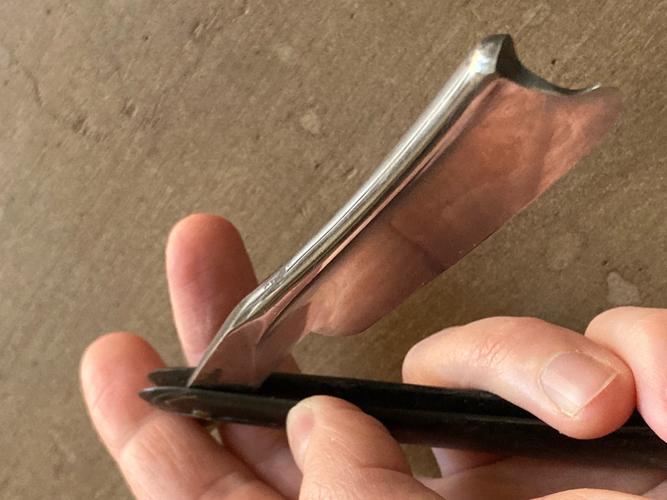
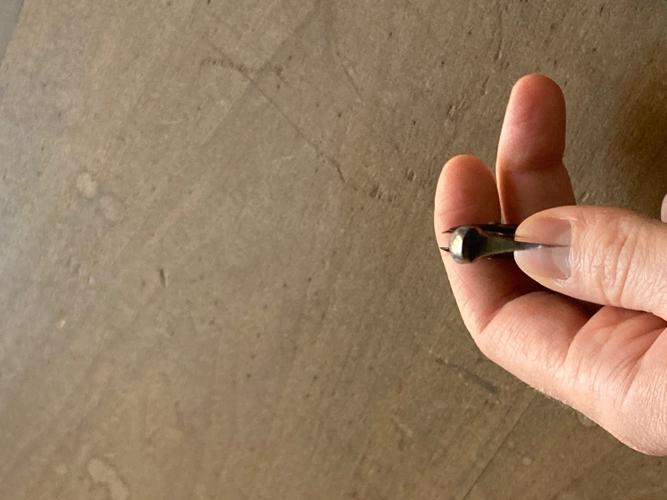
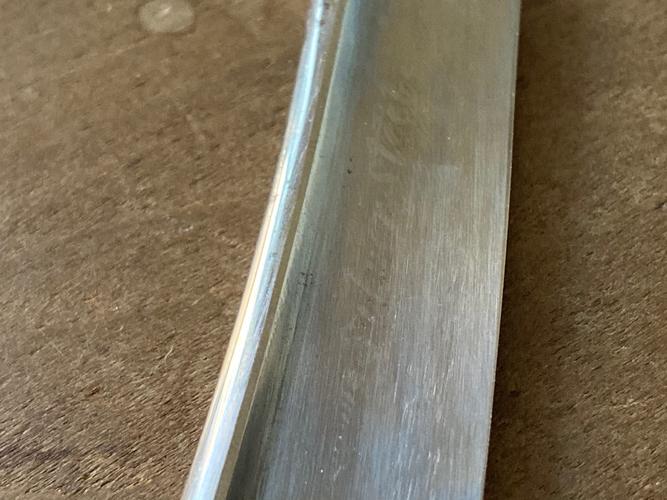
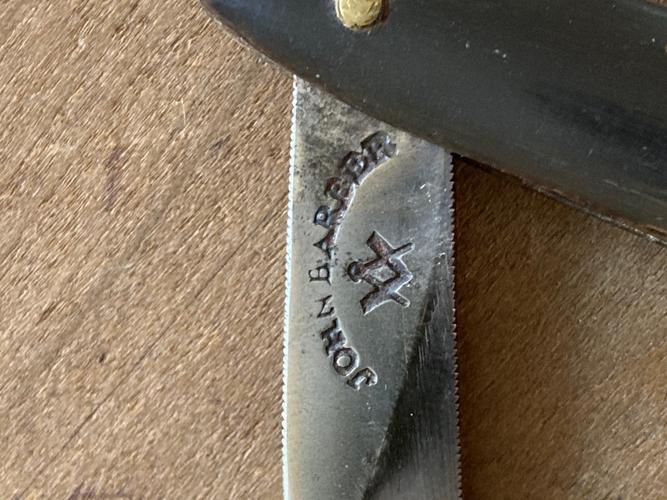
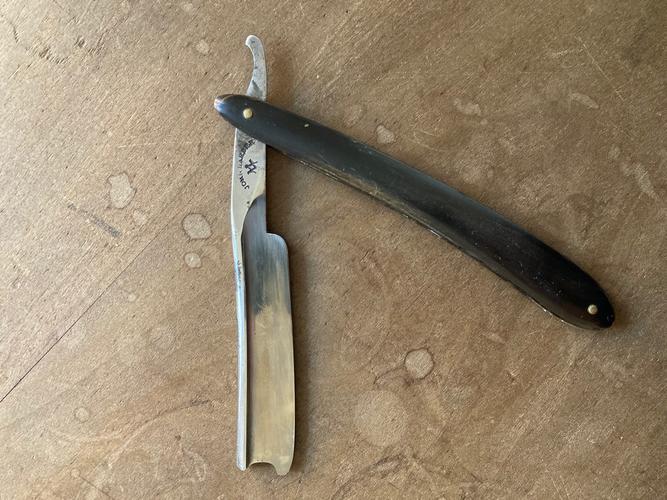
Last edited by jakfur; 02-22-2022 at 10:48 AM.
-
02-22-2022, 09:10 AM #2

It may have been reground to the "rattler" shape ?
The white gleam of swords, not the black ink of books, clears doubts and uncertainties and bleak outlooks.
-
02-22-2022, 10:14 AM #3Junior Member

- Join Date
- Feb 2022
- Location
- Sweden
- Posts
- 5
Thanked: 0
-
02-23-2022, 12:53 AM #4
 The white gleam of swords, not the black ink of books, clears doubts and uncertainties and bleak outlooks.
The white gleam of swords, not the black ink of books, clears doubts and uncertainties and bleak outlooks.
-
02-23-2022, 04:22 AM #5

Nice old blade! Guess you have done your homework.
The light remnants of the blade etch seem to speak of original profile.
A good thing!
-
02-23-2022, 07:33 AM #6Junior Member

- Join Date
- Feb 2022
- Location
- Sweden
- Posts
- 5
Thanked: 0
Ah, I see. I'd misunderstood what a frameback was. Thanks for correcting
 That might very well be the case. Does the inward toe speak to something special when it comes to the manufacturing date? When did that design come into use?
That might very well be the case. Does the inward toe speak to something special when it comes to the manufacturing date? When did that design come into use?
Well I've tried Thanks. I thought so too. One has to wonder how many of the old blades originally had etchings that have been lost to posterity due to heavy honing and renovation.
Thanks. I thought so too. One has to wonder how many of the old blades originally had etchings that have been lost to posterity due to heavy honing and renovation.
-
02-23-2022, 07:36 AM #7
-
02-24-2022, 12:24 PM #8Junior Member

- Join Date
- Feb 2022
- Location
- Sweden
- Posts
- 5
Thanked: 0
Thoughts anyone? Any help or guess is appreciated.

-
02-24-2022, 02:17 PM #9

I don't see a mystery. Most all English makers produced a 'rattler' grind razor. After all, it was everyone's early version of hollow-ground.
I could place this phenomenon in mid+ half of 1800's.
This grind was replaced by the advent of hollow-grinding as we know it today in short order. Thank the Germans for that.
The English had to catch-up quickly. In fact I don't ever recall seeing a rattler grind from a German maker?
So there seems to have been a short window of production and few examples from some makers are seen.
In fact, the style is not really common to see period.
Early American makers were also doing it.
The box does not seem to match the razor? Very common.
-
02-27-2022, 10:26 AM #10Junior Member

- Join Date
- Feb 2022
- Location
- Sweden
- Posts
- 5
Thanked: 0
Thanks for this sharptonn! So what are we talking time-wise, between which years would rattlers have been made, roughly? I can see how it's not a mystery to anyone, it's mostly just nerdy me trying to figure out whether my razor was actually made during the time of John Barber Sr himself (i.e. before 1834) or if it's more likely to have been made by his successors, mid-century.
UPDATE re: etchings on blades: upon googling I've found examples of earlier John Barber razors with etchings specifying the steel used, so guessing the etching above not a terribly useful dating reference.



 LinkBack URL
LinkBack URL About LinkBacks
About LinkBacks






 Reply With Quote
Reply With Quote


